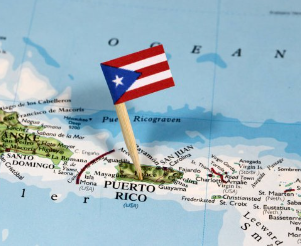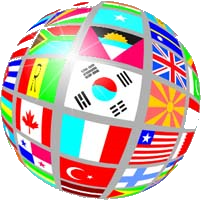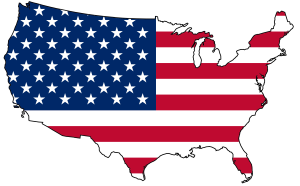Puerto Rico -- School-age
Puerto Rico
Things to Know
Official Name: Commonwealth of Puerto Rico
Government Type: Republican government, with separation of powers, and is subject to the sovereignty and jurisdiction of the US.
Puerto Rico means "rich port" in Spanish.
Capital: San Juan
County's inhabatants: Puerto Rican
Abbreviation: PR
Currency: U.S. Dollar
Official Languages: Spanish and English
The majority of Puerto Ricans are Roman Catholic.
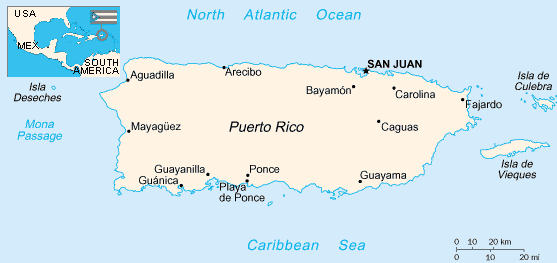
Puerto Rico is located about 1,000 miles southeast of Florida, a part of the West Indies in the north Caribbean Sea. Puerto Rico is surrounded by the Atlantic Ocean and the Caribbean Sea.
Puerto Rico includes the largest main island and a number of smaller islands.
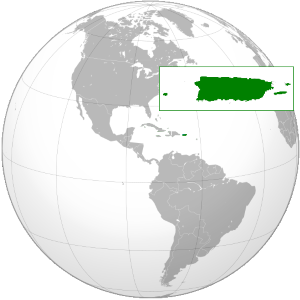
Is Puerto Rico Part Of The US? Video
History
Puerto Rico's first inhabitants were the Taino Indians, who originally came from South America. Christopher Columbus reached the islands during his second voyage in 1493 in the name of the Spanish Empire.
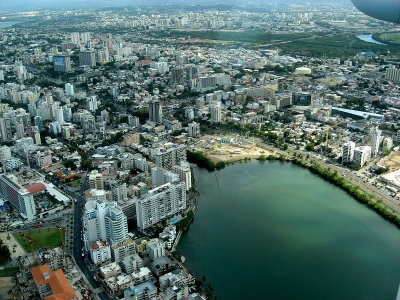
San Juan from above.
Beside the bay a town, Caparra, was founded. By 1521 the town was moved to the northern end of the harbor and named Puerto Rico. Over time the port became known as San Juan and the name Puerto Rico came to be applied to the whole island.
Settlement on Puerto Rico really began in 1898, when the Spanish gave the island to the U.S.
Pedro Albizu Campos was the main figure in the Puerto Rico independence movement.
Puerto Rico became a U.S. territory in 1917. In 1950, President Truman sighed the Puerto Rico Commonwealth Bill, which enabled the island' people to establish their own constitution. Puerto Rico became a commonwealth on July 25, 1952. It is a self-governing unincorporated territory of the United States.
Flag
The Puerto Rico flag was chosen in the late 1800's by the Puerto Rican section of the Cuban Revolutionary Party in exile in New York City. The design was the Cuban Flag , a reversal of the red and blue colors. The Cuban flag was derived in its choice of colors from the United States flag.
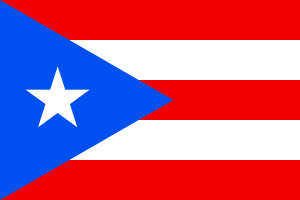
In 1952, when Puerto Rico officially became a commonwealth associated with the United States, the Puerto Rico flag was formally adopted as the country's flag. The symbolism behind some of the colors was altered to distance the flag from its history.
The color blue was changed to a darker tone to make it similar to the USA flag. The star represents the commonwealth. The white stripes stand for human rights and the freedom of the individual. The three corners of the blue isosocle triangle and the red strips represent the new republican system of government: the legislative, executive, and judicial branches of the government.
Video
Animals
Puerto Rico has no large wild mammals. THe coquí is a very tiny tree frog about one inch long. All land mammals on the island came with humans (except bats). Mice and rats came on sailing ships. The mongoose was brought in to control rats on sugarcane plantations. Domesticated animals such as cats, dogs, cows, and horses were brought to Puerto Rico.
Iguanas and many small abound, bats are present, as are a few snakes. The largest snake is the Puerto Rico boa.
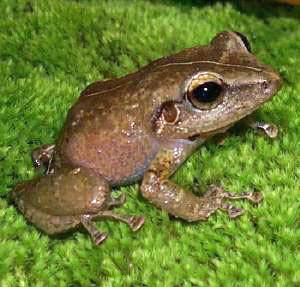
In the waters surrounding are variety of sea mammals, such as dolphins and humpback whales.
Puerto Rico has some insects including mole crickets and termites that damage buildings and crops. Barracuda, kingfish, crabs, mullet, Spanish mackerel, tuna, sharks, snappers, lobster, and oysters are among the marine life inhabiting coastal waters.
Land
Puerto Rico has a tropical climate with tropical wet and dry climates. There is little difference from season to season.
Puerto Rico is a mountainous tropical island; sixty percent of Puerto Rico is covered in mountains.
Puerto Rico is a mountainous tropical island; sixty percent of Puerto Rico is covered in mountains.
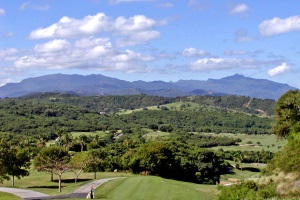
Most of tropical forests in Puerto Rico are gone. El Yunque Peak is the Caribbean National Forest. These 28,000 acres are all that remain of the rain forest that once covered much of the island
Plants
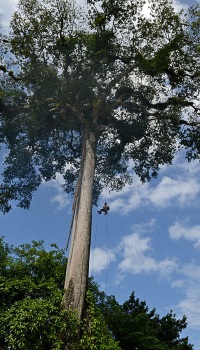
Video
Things to Do
Fort El Morro is a fortress that was completed in 1589. El Morro has small circular sentry boxes. Make a Sand Castle Glitter Globe. (school-age)
More Puerto Rica crafts for school-age children - Puerto Rican Mask, Red and White Jars.Bird-
Flower-Boricua Kids contains lesson plans and printouts.
Roberto Clemente
The first Hispanic to enter the National Baseball Hall of Fame.
See Also

